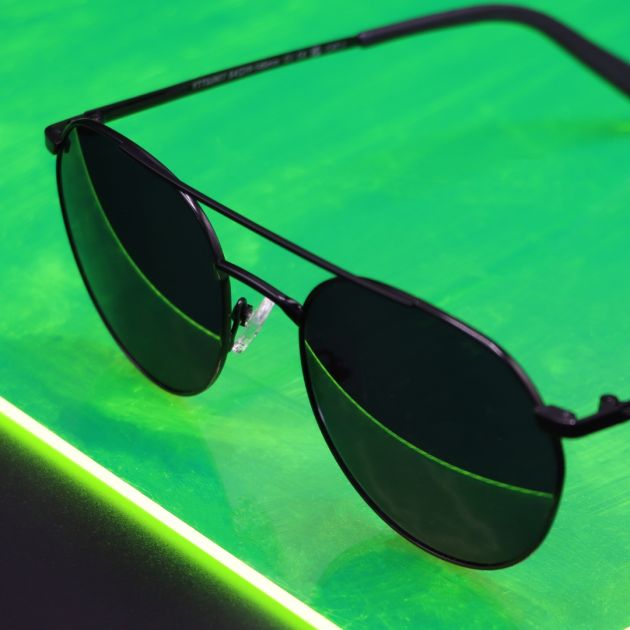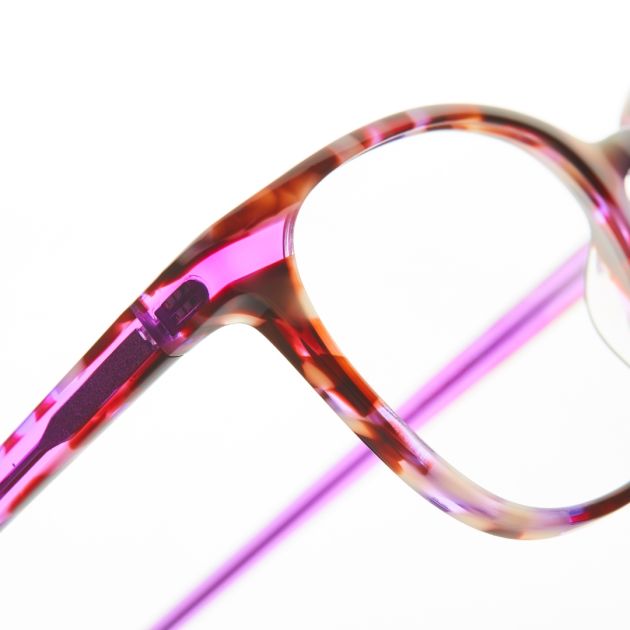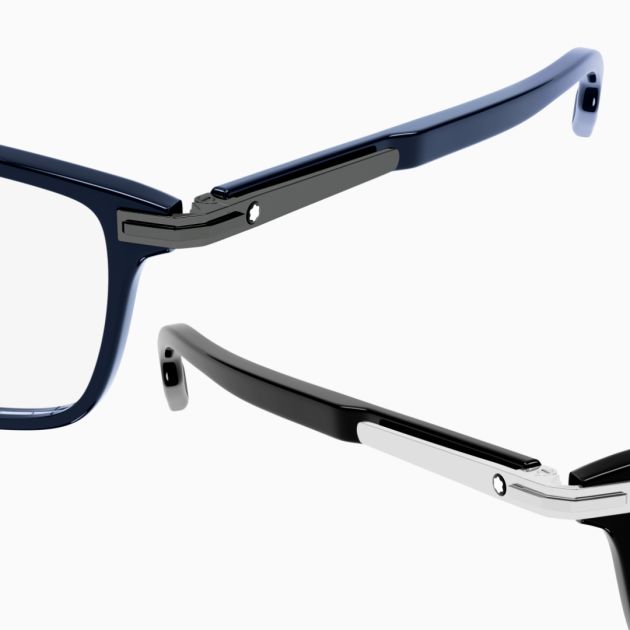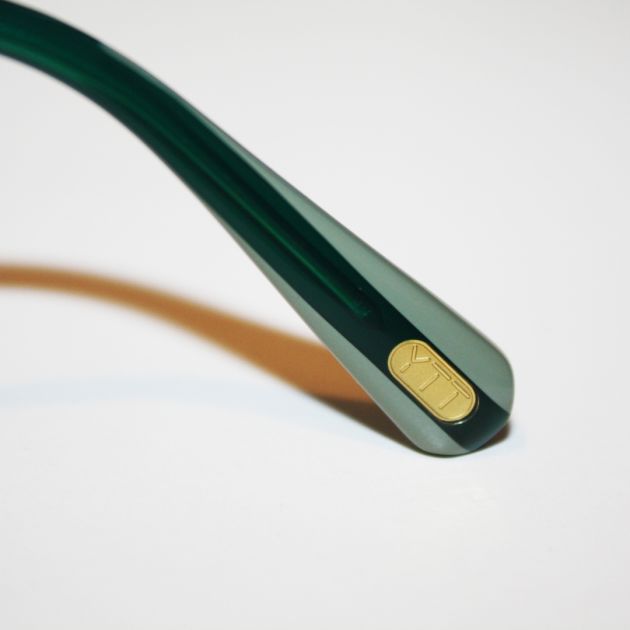
Meticulous design and planning go into every single piece of eyewear we showcase here at Leightons. From the bridge through to the temple tips, each element of the frame plays an important role in perfectly balancing form and function.
So join us as we dissect the anatomy of a frame and why even the smallest of features can transform a frame's impact.
The front of the frame
Bridge shape and nose pads

At the forefront of every frame is the bridge, which serves as the foundation upon which the entire structure rests. Bridges come in a variety of styles and fittings - some are designed to sit snugly on your nose bridge, whilst other styles such as keyhole bridges make lesser contact. Of course, the style of the bridge is very much linked with the type of nose pads used in the design; moulded and adjustable.
Moulded nose pads: Typically found on acetate and formed frames, moulded nose pads are seamlessly carved, blending into the frame almost as if they’re not there at all. This approach not only adds to the frame's aesthetics but also ensures the nose pads don't intrude on your field of vision. Our dispensing opticians always check the fitting of moulded nose pads. If the bridge of your nose is either broad, shallow or narrow, some moulded bridge frames may sit either too high or too low, causing discomfort and inhibiting the effectiveness of your prescription lenses.
Metal adjustable nose pads: As the name suggests, each nose pad can be individually repositioned, resulting in a perfectly refined fit. Often made from silicone or other soft-touch material, many wearers prefer the feel and security of adjustable nose pads. Offering not only functionality but style, the metal stems that connect the pad to the frame are sometimes coloured as a playful design feature; an eye-catching detail, showcasing the artistry of eyewear craftsmanship.
Hinges

While hinges may seem like a minor component, they are a practical element that can greatly impact the overall style and function of a frame. Some hinges may have screws, whereas other mechanisms have been intricately designed to function without.
Many frames have a single-barrel hinge between the front and temple (or arm), however in more luxurious eyewear brands you may see double or even triple barrel hinges which provide additional strength and stability.
Rivets
Rivets, often overlooked as purely functional elements, play a significant role in the visual appeal of a frame. They are not just fasteners, connecting front to sides, they are design elements that can elevate a frame from ordinary to iconic.
The side of the frame
Temples (Arms)

The temples, also known as arms, are the sides of the frame that extend from the front to secure eyewear in place, fitting ergonomically around the ears. These components are integral to both the fit and style of the frame and are often used by designers to include brand elements and iconography. Even the ‘core wire’ inside the temple has surpassed its purely practical purpose and can now be laser etched with an intricate pattern, to elevate design.
Another temple option, often sought after by those who participate in active sports, is “skull fit”, which wraps around the head rather than behind the ear for added security during movement. Think sports such as cycling, where your head may be angled forward. Temple straps that attach at the back of the skull are also extremely useful for this purpose.
Temple tips

Last but certainly not least, temple tips are the final frontier of our frame anatomy exploration. These small, often underestimated components are instrumental in providing comfort and stability around the ear. They can be sleek and subtle or used as a tool for design, giving the frame one final burst of colour.
Ready to discover your perfect glasses?
Book a style consultation with one of our qualified dispensing opticians at your nearest Leightons practice today. Our teams are ready and waiting to help you find eyewear that looks fantastic, feels effortlessly comfortable and enhances your vision!
To book, call us on 0800 40 20 20, visit your nearest practice or book an appointment online.








